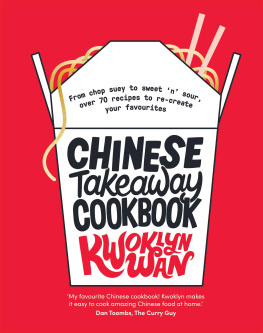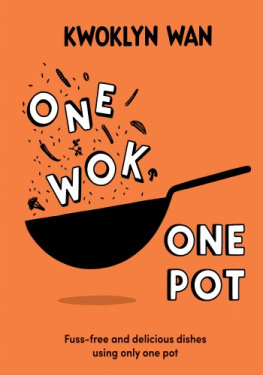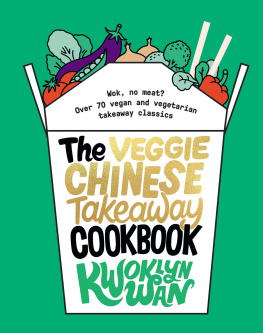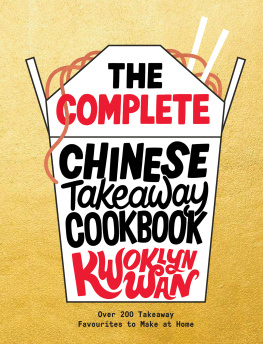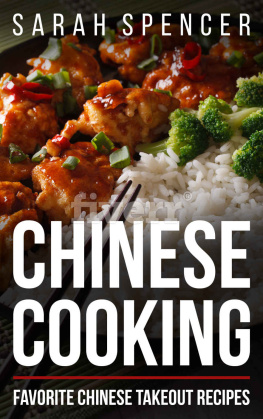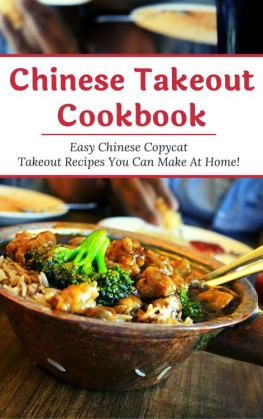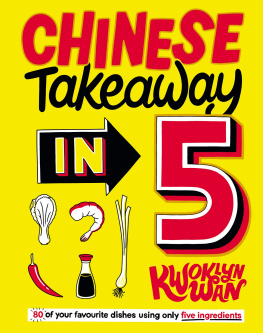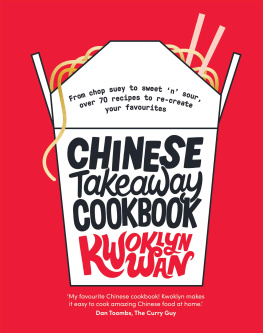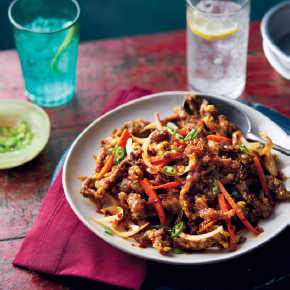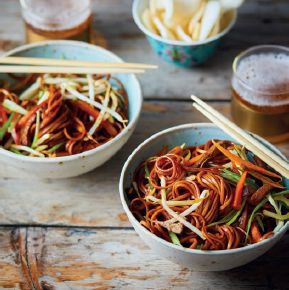Publishing Director Sarah Lavelle
Design & Art Direction Emily Lapworth
Editorial Assistant Harriet Webster
Photographer Sam Folan
Food Stylist Emily Jonzen
Props Stylist Agathe Gits
Production Director Vincent Smith
Production Controller Nikolaus Ginelli
Published in 2019 by Quadrille, an imprint of Hardie Grant Publishing
Quadrille
5254 Southwark Street
London SE1 1UN
quadrille.com
All rights reserved. No part of this publication may be reproduced, stored in a retrieval system or transmitted in any form by any means, electronic, mechanical, photocopying, recording or otherwise, without the prior written permission of the publishers and copyright holders. The moral rights of the author have been asserted.
Cataloguing in Publication Data: a catalogue record for this book is available from the British Library.
Text Kwoklyn Wan 2019
Photography Sam Folan 2019
Design Quadrille 2019
eISBN 978-1-78713-368-6
Man who stands on hill with mouth open will wait a long time for roast duck to drop in.
Chinese food has long been a favourite weekend treat, with entire families ritualistically ordering their favourite dishes from their local Chinese every Friday night. It could quite easily be the 11th commandment: Thou shalt have Chinese every Friday!
This cookbook isnt my interpretation of what I think Chinese food should taste like this book is the holy grail of Chinese takeaway (and restaurant) trade-secret recipes. Everyone has a favourite dish and this book will help you to re-create those dishes step-by-step with ease and simplicity.
I literally grew up in the kitchens of Chinese restaurants. Unlike other children on my estate, my playground was the kitchen store room and, when it was closed, under the tables in my dads Cantonese restaurant. Im sure if you cut me in half it would say 10 minutes through the middle (in a broad Chinese accent), which is pretty much what we told every customer who asked how long their order would take to arrive.
Most classic Chinese recipes cook in minutes, therefore there is some preparation to be done before we get our kwok (I mean wok!) on. Careful chopping is a must as you need to ensure that all meat and vegetables are cut uniformly, so everything can cook evenly. Seasoning and sauces also need to be pre-measured because as soon as you fire up that wok, it's all hands on deck and go, go, go! Well, for 5 minutes at least. Then its back to the calm and you can savour the smells of the aromatics as they fill your kitchen before you sit down to eat.
Grandad, like many Chinese back in the 1950s, opted to migrate to the UK, a journey that took a month by boat, and on arrival he headed to the Midlands where he settled in Leicester. In 1962 Grandad opened Leicesters first Chinese restaurant (a chop suey house). Chinese ingredients were very hard to come by, so the menu mainly consisted of British dishes like steak and roast chicken with a few beansprouts or chop suey vegetables thrown in. The restaurant was very popular and was even visited by the Beatles when they played in Leicester in 1964.
Dad managed the restaurant for the family until 1978 when he opened his own restaurant, The Bamboo House, Leicesters very first Cantonese Restaurant. He sourced two amazing chefs from London and the business took off with a BOOM!
As you can imagine, it was hard work and took up most of my parents time, so in 1983 they bought a restaurant on Fosse Road North in Leicester, which he named The Panda, with living accommodation above; this allowed them to spend more time with us, The Wan Children. Little did I know at the time, but this would be the start of my career as a chef. Every weekend and sometimes midweek I would be in the kitchen helping, washing up, peeling prawns or chopping vegetables. It was our way of life and fuelled my obsession with food.

Dad liked that the restaurant was family-run and would often parade us around in front of the diners. There were even times when we sang carols at the tables to regular customers (much to my horror now). At 16, I left school and assumed my role as a full-time chef at The Panda. My days were spent preparing ingredients for the night ahead and in the evenings I created amazing Cantonese and Szechuan dishes. Business was booming; we even made it into The Good Food Guide, where we stayed for several years.
Over the years Ive run a full-time Kung Fu school, presented a huge martial arts and fitness show, opened a truckers cafe, a Taiwanese bubble tea store and a Hong Kong street food bar, yet, despite my many varied business activities over the years, cooking has always remained at the heart of my DNA. Its as natural as breathing and I cannot remember a time when I couldnt cook. I feel so lucky to have been able to share my knowledge in a myriad of magazines and newspapers, on the radio, at live events and even on TV, and now via the pages of this book the ultimate guide to re-creating your favourite Chinese takeaway and Cantonese restaurant dishes at home!
Chinese cooking is frantic and it can feel like a workout as everything happens all at the same time, but with a little bit of TLC and forward planning youll be tossing your wok like a pro and creating amazing dishes. In the time it takes to dial the number and order your favourite Chinese meal, you could be sitting at the table delving into rich aromatic soups, munching on crispy fried delights and shovelling down the tastiest chow mein dish youve ever eaten, all cooked by your own fair hands.
Now less of the chit-chat; get your (K)wok on and enjoy!
Kwoklyn x
www.kwoklynwan.com
The kitchen is the heart of the home.
Chinese people have many customs and traditions, such as you must always respect your elders and the littlest of actions have huge significant meanings. Over the years I have not always got these right and have been told off by my grandma and dad on many occasions. Even now, Dad will correct me on the smallest of things, so much so that its now just expected and often laughed about.
After pouring tea, it is essential never to point the spout of the teapot at others because this gesture has the same meaning as using the finger to point, which in Chinese culture is considered rude. Therefore, the spout must be directed to where no one is sitting, usually outward from the table.

